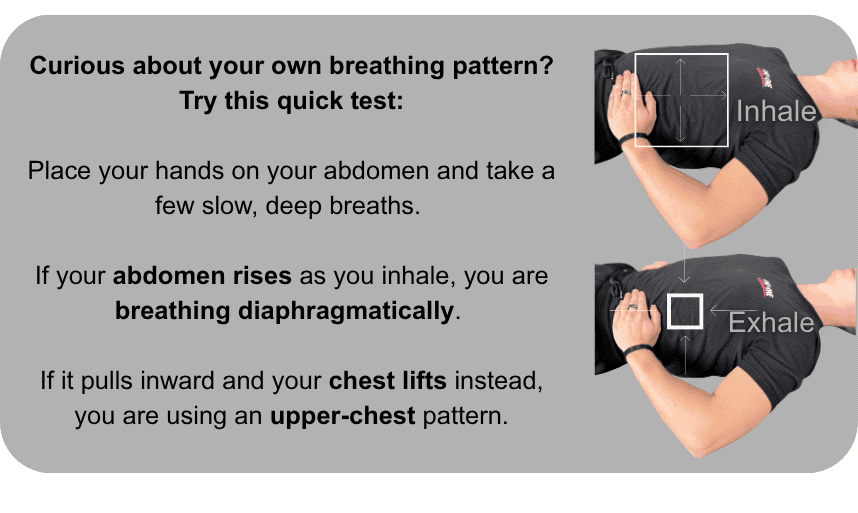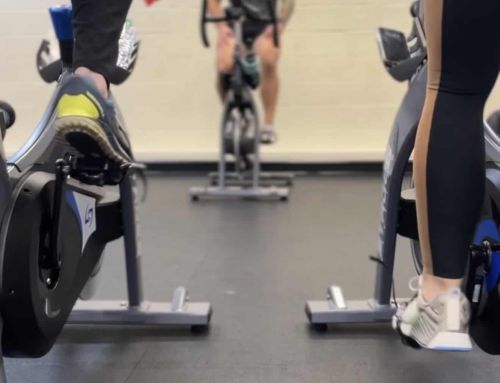
By The One on One Team
Last Updated: 11/02/25
Understanding Diaphragmatic Breathing: The Key to Better Movement and Performance
We breathe more than twelve thousand times a day, and every breath influences how we move, recover, and perform. Over time, these natural breathing mechanics can be altered by stress, posture, and daily habits, turning deep, efficient breathing into a shallow pattern that limits both health and performance.
At One on One, we view breathing as the foundation of effective movement. Whether the goal is to improve functionality, build strength, or increase cardiovascular capacity, the first step is learning how to breathe properly.
Understanding Breathing Mechanics
The body’s natural breathing pattern begins with the diaphragm, a dome-shaped muscle that sits below the lungs. During inhalation, the diaphragm contracts and moves downward, drawing air deep into the lungs. The ribs and abdomen expand while the shoulders remain relaxed. This diaphragmatic breathing pattern enhances core stability and supports proper posture.
Over time, many people develop an upper-chest breathing pattern, where the shoulders and chest lift with each breath. This inefficient pattern can lead to forward-head posture, tight neck and shoulders, fatigue, and an unstable foundation for movement. The body stays in a subtle state of stress, which can limit performance and recovery.

Breathing and Stability Training
At One on One, we talk a lot about maintaining ‘neutral spine’ as we exercise. Neutral spine is maintained by activating the deep core muscles that stabilize our spine. One of these deep core muscles is the diaphragm, which has a dual role as a respiratory muscle and a stabilizer muscle. When the diaphragm works in unison with rest of the core stabilizers, they create an ideal environment for spinal stabilization. These stabilizer muscles act as natural weight belts that help protect our lumbar spine.
True stability comes from integrating diaphragmatic breathing with movement. A particular focus should be placed on breathing during core stabilization exercises such as Bird Dogs and Half-Kneeling Chops/Lifts. As a general rule, inhale in the most stable position and exhale as you move to maintain proper core engagement.
Breathing and Mobility Training
Flexibility and mobility depend on the body’s ability to relax. Long, steady breaths signal the nervous system to release tension, allowing joints and muscles to move freely.
During stretching or mobility work, focus on slow diaphragmatic breathing. Avoid forcing the movement or holding your breath; both signal stress and cause the body to tighten. Aim for a stretch intensity that feels challenging but comfortable, around three-fifths of your maximum range. You should feel the stretch, but still be able to breathe easily.
Breathing and Aerobic Training
High-intensity training challenges more than your muscles; it challenges your ability to breathe efficiently under pressure. As intensity rises, breathing often becomes shallow and hurried, reducing oxygen delivery and increasing fatigue.
Between intervals or sets, focus on restoring diaphragmatic breathing. Take deep, controlled breaths that expand the abdomen and lower ribs, helping the body recover more quickly. Consistent practice of this breathing pattern improves efficiency and control, helping you sustain effort and recover more effectively during demanding sessions.
Final Takeaway
Breathing is a skill that underpins every aspect of training. When performed correctly, it creates stability, supports movement quality, and improves the body’s ability to perform and recover. Developing efficient breathing habits is one of the simplest, most effective ways to enhance your overall fitness.




